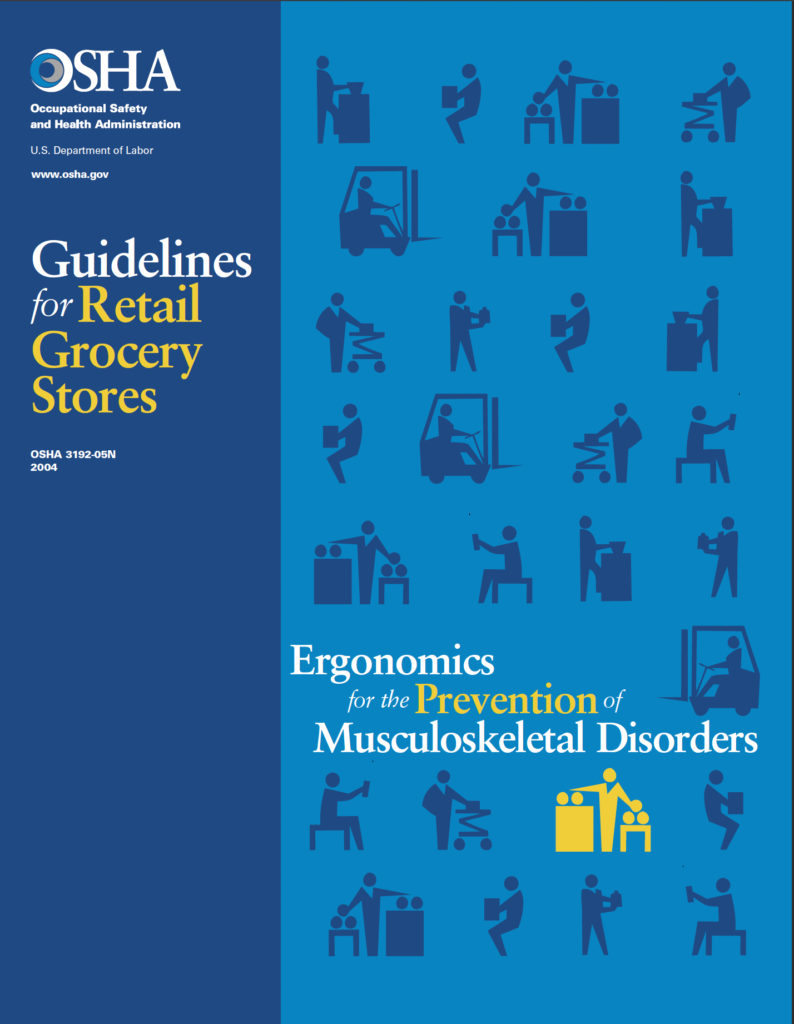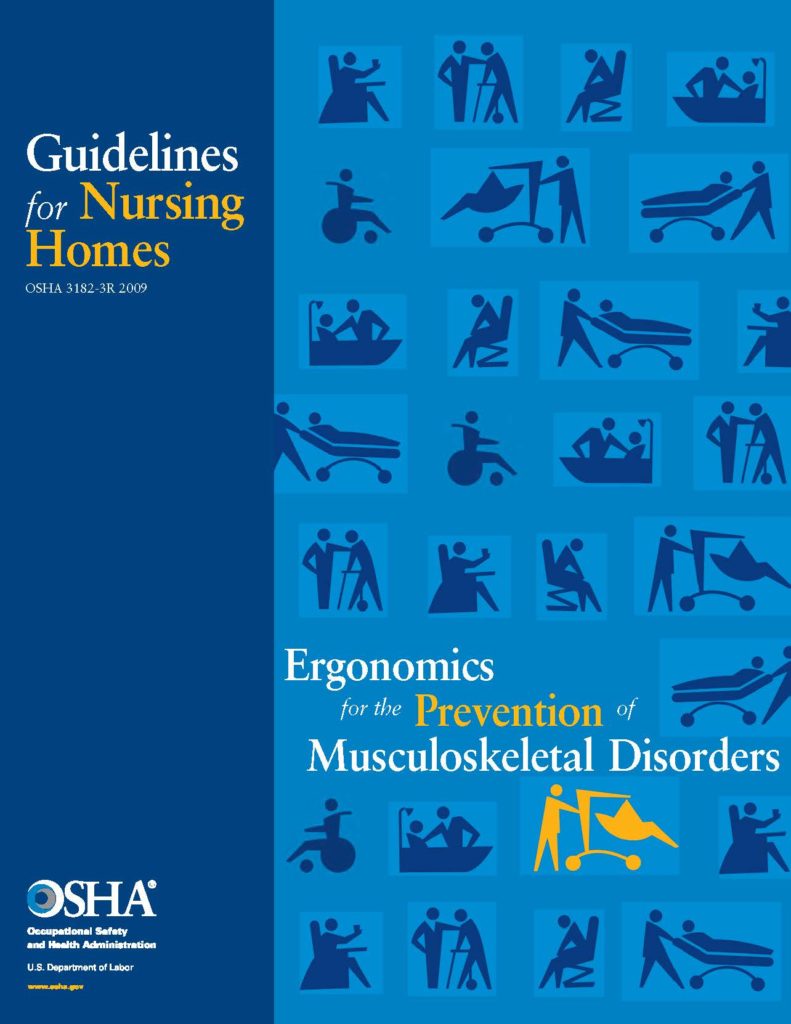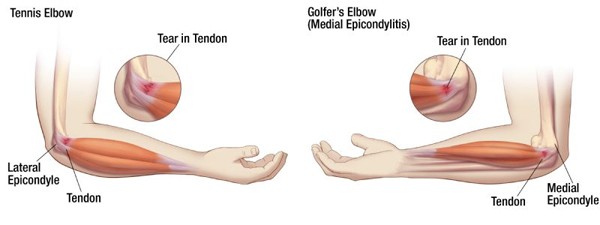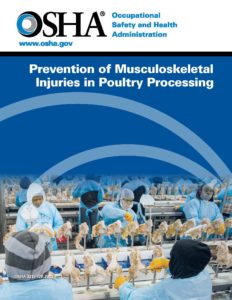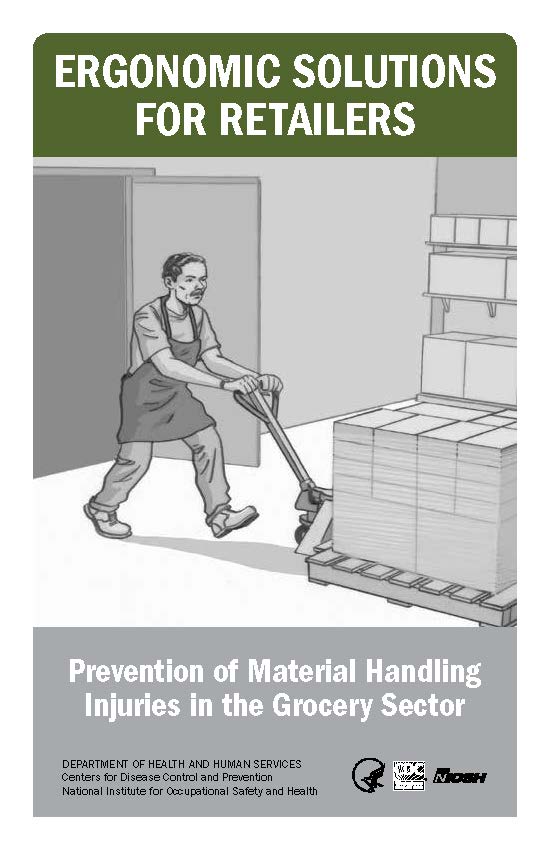Ergonomics for the Prevention of Musculoskeletal Disorders: Guidelines for Retail Grocery Stores
Ergonomics for Truckers
Truck drivers often sit for long periods of time, which puts stress on the lower back. This video identifies things truck drivers can do before they start work to reduce the risk of back injury.
This great video courtesy of WorkSafeBC
TheraCane Massage
TheraCane Massage | Early Intervention Ergonomics
What exactly is a TheraCane?
The TheraCane Massager is a handheld self-massage tool that relieves muscle tension and trigger points in hard-to-reach areas of the body. The plastic curve of the TheraCane has strategically placed knobs and balls for applying pressure to specific areas of the body, such as the neck, shoulders, back, hips, and legs.
The TheraCane Massager is often used by people who suffer from chronic pain or muscle tension due to conditions such as fibromyalgia, arthritis, or back pain. It can also be used by athletes or individuals who engage in regular physical activity to help soothe sore muscles and improve flexibility.
Use the TheraCane by applying pressure to the targeted area using the knobs or balls of the cane. You control the amount of pressure applied with the hands. Use the TheraCane alone or with the assistance of a partner. The TheraCane is a safe and effective treatment for most people.
Early Intervention Benefits of a TheraCane Massage
Using a TheraCane Massager provides several Early Intervention benefits, including:
- Pain relief: The TheraCane can help relieve muscle tension and soreness in various parts of the body. These areas include the neck, shoulders, back, hips, and legs. This can provide relief from chronic pain, headaches, and other discomforts.
- Improved flexibility: The TheraCane stretches and releases tight muscles, improving flexibility and range of motion.
- Enhanced blood flow: The pressure applied by the TheraCane can improve blood flow to targeted areas. This can help speed up the healing process and reduce inflammation.
- Stress reduction: Using the TheraCane can be a relaxing and meditative experience. This is important with helping to reduce stress and anxiety levels.
- Self-care: The TheraCane is a self-massage tool that allows individuals to take control of their own health and well-being. Use the TheraCane at home or on the go to provide a convenient way to address muscle pain and tension.
Things to Remember
It is important to note: use the TheraCane with caution and under the guidance of a healthcare professional, especially if you have certain medical conditions.
These Early Intervention exercises are to improve health and fitness.
First thing to remember, if you have an injury or illness, please consult with a health care professional before attempting.
More Tools & Resources from Peak Ergonomics
Contact Us About Reducing Workplace Injuries
Healthy Employees are the Bottom Line! – Learn More!
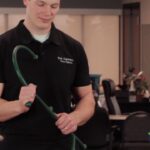
Ergonomics for the Prevention of Musculoskeletal Disorders: Guidelines for Nursing Homes
Healthy Elbow Solutions: Tennis & Golfer’s Elbow Prevention & First Aid
Education:
Tennis and Golfer’s elbow are similar; they are just on opposite sides of the elbow. Tennis elbow occurs on the outside or lateral epicondyle. The lateral epicondyle anchors the common wrist extensor tendon; which branches into four muscles that extend the wrist, extend the long digit and supinate (palm up) the forearm. Golfers elbow occurs on the inside or medial epicondyle. The medial epicondyle anchors the common wrist flexor tendon; which branches into four muscles that flex the fingers and the wrist together and pronate (palm down) the forearm. Since the finger flexors automatically flex the wrist, the wrist extensors are required to activate to counterbalance the wrist. Forceful and repetitive gripping in an awkward posture can strain the tendon and cause microscopic tearing of the tissue. This creates an inflammation, which classifies as tendinitis. Treatment includes rest, ice & anti-inflammatories. Scar tissue generates to mend the torn tissue, which takes 21 days to attain 10% of the normal strength and can take several months to return to normal strength. Many times, the scar tissue repeatedly tears, and the tendon fails to heal. This problem classifies as tendinosis and treatment include heat, massage, and exercise. Anti-inflammatories may impede healing and so we recommend using Tylenol. Always read and follow the direction on the bottle before taking any medication.
Prevention:
- It is important for handles to have a good grip, 1 ½ “diameter with at least 5” length with good friction.
- Use power tools instead of manual tools.
- Use jigs and fixtures to hold work.
- Perform gripping activities with elbow at 90° with palms facing each other and wrists straight.
- Frequently perform stretching to reduce fatigue.
Self-Care: Acute Tendinitis:
- Ice 15 minutes, 4 times per day.
- NSAID’s – Ibuprofen, Naproxen, and Aspirin. Read and follow directions on the bottle.
- Rest: avoid repetitive or forceful gripping.
- Wear a forearm strap during the day to help the tendon rest and heal.
- Wear a wrist splint while sleeping to help the tendon rest and heal.
Chronic Tendinosis:
- Moist heat 15 minutes, 4 x day
- Deep tissue massage 5 minutes 2 x day
- Gradual progression of stretching
- Gradual progression of strengthening
- Wear a forearm strap during the day to help the tendon rest and heal.
- Wear a wrist splint while sleeping to help the tendon rest and heal.
- Avoid NSAID’s such as ibuprofen, Naproxen, and Aspirin. Use Tylenol for pain relief. Read and follow directions on the bottle.
Preventing Injuries in Poultry Processing
Things to Remember
Musculoskeletal injuries are a significant concern in the poultry processing industry, where workers engage in repetitive tasks and often work in awkward positions. These injuries can lead to chronic pain, reduced productivity, and increased healthcare costs. To ensure a safe working environment and promote the well-being of employees, it is crucial to implement preventive measures. In this article, we will explore effective strategies and best practices to preventing injuries in poultry processing facilities.
1. Ergonomic Workstations and Equipment:
One of the primary contributors to musculoskeletal injuries is poor workstation design. Employers must invest in ergonomically designed workstations and equipment to minimize strain on workers’ bodies. Adjustable work surfaces, height-adjustable chairs, and appropriate lighting are essential elements in creating ergonomic workstations. Additionally, using mechanized tools and equipment for tasks such as lifting, cutting, and deboning can significantly reduce the risk of injuries.
2. Training and Education:
Proper training and education play a crucial role in preventing musculoskeletal injuries. Employees should receive comprehensive training on ergonomic techniques, safe work practices, and the proper use of equipment. Regular refresher courses can help reinforce these practices and keep workers updated on the latest safety guidelines. Training programs should also include information on identifying early signs of musculoskeletal discomfort and the importance of reporting symptoms promptly.
3. Job Rotation and Breaks:
Repetitive motions and prolonged periods of static posture can lead to muscle fatigue and increased injury risk. Implementing job rotation and scheduled breaks can help reduce the strain on specific muscle groups and provide opportunities for recovery. By alternating tasks or allowing employees to switch between workstations periodically, workers can avoid overexertion and minimize the risk of developing musculoskeletal injuries.
4. Stretching and Warm-Up Exercises:
Encouraging employees to perform stretching and warm-up exercises before starting their shifts can significantly improve flexibility, reduce muscle tension, and prevent injuries. Simple exercises, such as neck rotations, shoulder stretches, and wrist flexion/extension, can help warm up the muscles and joints. Employers can conduct regular group stretching sessions or provide educational materials on recommended exercises to foster a culture of proactive injury prevention.
5. Adequate Staffing and Workload Management:
Understaffing and excessive workloads can contribute to hurried work and improper lifting techniques, increasing the likelihood of musculoskeletal injuries. Employers must ensure adequate staffing levels to manage workloads effectively. Regular reviews of workload distribution and the provision of additional resources during peak periods are essential to maintaining a manageable and safe work environment.
6. Continuous Improvement and Feedback:
Creating a culture of continuous improvement and open communication is vital for preventing musculoskeletal injuries. Employers should actively seek feedback from workers regarding potential hazards, discomfort, and suggestions for improvement. Regular safety audits and ergonomic assessments can help identify areas that require attention. This, in turn, allows for timely modifications to workstations, equipment, or procedures.
Conclusion:
Preventing musculoskeletal injuries in poultry processing requires a comprehensive approach that addresses ergonomic design, training, job rotation, breaks, stretching exercises, adequate staffing, and continuous improvement. By implementing these strategies, employers can create a safer work environment, reduce the risk of injuries, and promote the well-being of their workforce. Investing in injury prevention not only protects the employees but also contributes to enhanced productivity, reduced healthcare costs, and a positive workplace culture. By prioritizing the prevention of musculoskeletal injuries, the poultry processing industry can pave the way for healthier and more sustainable operations.
Contact us today and let us help you to improve your employee’s health and reduce work-related injuries.
Related article:
Ergonomic Solutions for Retailers (NIOSH)
- Material handling injuries can have a significant impact on the productivity and well-being of workers in the retail sector. With the physical demands of lifting, carrying, and moving heavy items, it is crucial to implement effective injury prevention measures. This article aims to provide ergonomic solutions for retailers on preventing material handling injuries, highlighting key strategies and best practices.
- Before diving into ergonomic solutions for retailers, it’s essential to understand the common risks associated with material handling in retail stores. These risks include musculoskeletal disorders, strains, sprains, slips, trips, and falls. By recognizing these hazards, employers can take proactive steps to address them effectively.
More Tools & Resources from Peak Ergonomics
Healthy Employees are the Bottom Line!
Ergonomic Solutions For Retailers
Ergonomic Solutions for Retailers (NIOSH)
Things to Remember
Material handling injuries can have a significant impact on the productivity and well-being of workers in the retail sector. With the physical demands of lifting, carrying, and moving heavy items, it is crucial to implement effective injury prevention measures. This article aims to provide ergonomic solutions for retailers on preventing material handling injuries, highlighting key strategies and best practices.
1. Understanding the Risks
Before diving into ergonomic solutions for retailers, it’s essential to understand the common risks associated with material handling in retail stores. These risks include musculoskeletal disorders, strains, sprains, slips, trips, and falls. By recognizing these hazards, employers can take proactive steps to address them effectively.
2. Employee Training and Education
Investing in comprehensive employee training and education programs is the cornerstone of injury prevention. Proper training should cover safe lifting techniques, body mechanics, and the use of assistive devices such as hand trucks, dollies, and pallet jacks. Encouraging employees to report any discomfort or pain early on can help identify potential issues and mitigate them before they worsen.
3. Ergonomic Workstations and Equipment
Creating ergonomic workstations and providing suitable equipment can significantly reduce the risk of material handling injuries. Adjustable shelving heights, easy access to products, and anti-fatigue mats in high-traffic areas can minimize strain on employees’ bodies. Additionally, using mechanical aids like conveyor belts or automated systems for heavy lifting can significantly decrease the physical burden on workers.
4. Proper Organization and Storage
Efficient organization and storage of products play a vital role in injury prevention. Designate specific areas for frequently accessed items and ensure they are within easy reach. This reduces the need for excessive bending, reaching, or twisting, minimizing the risk of strains or falls. Regularly review and update storage practices to maintain optimal accessibility and reduce clutter.
5. Teamwork and Communication
Encouraging teamwork and effective communication among employees is essential for preventing injuries. Encourage workers to collaborate when handling heavy loads and provide clear instructions for team lifting. Establishing an open-door policy where employees can share safety concerns or suggestions fosters a culture of safety and helps identify potential hazards before they cause harm.
6. Regular Maintenance and Inspections
Regular maintenance and inspections of equipment and storage areas are crucial to ensure a safe working environment. Schedule routine checks for shelves, racks, pallets, and handling equipment to identify any signs of wear, damage, or instability. Promptly repair or replace faulty equipment to prevent accidents and injuries.
7. Promote Worksite Wellness
Promoting worksite wellness programs can contribute to injury prevention and overall employee well-being. Encourage regular exercise, stretching, and warm-up routines to improve physical fitness and flexibility. Provide access to ergonomic seating, rest areas, and hydration stations to alleviate fatigue and promote employee comfort during breaks.
8. Continuous Improvement and Feedback
Establishing a feedback loop with employees is essential for continuous improvement in injury prevention strategies. Conduct regular safety meetings to discuss concerns, share best practices, and address any emerging issues. Actively involve workers in developing and implementing safety protocols, as they possess valuable insights into their day-to-day tasks.
Conclusion
Preventing material handling injuries in the retail sector requires a proactive and multi-faceted approach. By prioritizing employee training, implementing ergonomic workstations, ensuring proper organization and storage, fostering teamwork and communication, conducting regular maintenance, promoting worksite wellness, and encouraging continuous improvement, retail store employers can create a safer work environment that reduces the risk of injuries. By implementing these strategies, we can protect the well-being of retail workers and improve overall productivity. We recommend that you download the guide Ergonomic Solutions for Retailers to keep on hand as an important safety tool of reference.
Healthy Employees ARE the Bottom Line!
We are an injury prevention business. Specifically, we prevent sprains, strains and cumulative trauma injuries. It’s the simplest thing for me to say, but sometimes it’s the hardest thing to understand. What we want is your employees to be healthy. Peak Ergonomics serves over 50 communities in the Show-Me State of Missouri and all of our clients have had tremendous success at preventing injuries.
We have joined together the dream team of highly skilled professionals from across the healthcare industry; we have physical therapists, occupational therapists, exercise kinesiologists that are working with us at Peak Ergonomics. We have a tremendous diversity of clients. One of our clients will go 1500 feet underground. We go out on farms. We’re working with big machines and heavy equipment operators. We can contrast that and go into the office environment where we’re making sure that the employee is sitting comfortably at their desk and adjusting their monitors. Peak Ergonomics goes into the manufacturing and production line assembly to ensure your employees are safe.
Peak Ergonomics has pioneered the field of early intervention. We have had thousands and thousands of successful cases; all we do is prevent injuries. Healthy employees are better employees. If we can keep your employees healthy and safe, it’s going to be good for everybody. Our focus, this company’s focus is so driven toward taking care of your employees. We have your best interest in mind. We will do anything and everything to help you in your business and your employees to prevent injuries and help you to have a well workforce. That’s all we do, and we want to help you.
Healthy Employees ARE the Bottom Line!
Contact us for more information on how we can help your employees stay safe.
Learn more about our track record of success.
More Tools & Resources from Peak Ergonomics
Doorway Stretch
Doorway Stretch | Early Intervention Ergonomics
What is the Doorway Stretch?
The term “doorway stretch” typically refers to a stretching exercise that targets the muscles of the chest, shoulders, and arms. It is a simple and effective stretch that can be done using a doorway or any vertical structure with enough space.
Here’s how to perform the doorway stretch:
- Find a doorway or an open space between two walls.
- Stand facing the doorway with your feet shoulder-width apart.
- Raise your arms to the sides, so they are parallel to the floor, and bend your elbows at a 90-degree angle. Your forearms and hands should be resting against the door frame or walls.
- Take a step forward with one foot, maintaining a stable stance.
- Lean your body forward slightly, allowing your chest and shoulders to stretch as you feel a gentle pull in the front of your shoulders and chest.
- Hold the stretch for about 10-15 seconds while keeping your breathing relaxed.
- Slowly step back and release the stretch.
Perform this stretch to give your body a rest when performing activities that involve awkward postures of the shoulder such as reaching away from the body, hunching the shoulder, lifting or carrying.
Early Intervention Benefits
The doorway stretch offers several early intervention health benefits. By targeting the muscles of the chest, shoulders, and arms, this stretch helps improve flexibility, posture, and range of motion. Let’s delve into the specific benefits in more detail:
- Increased Flexibility: The doorway stretch stretches the pectoral muscles, anterior deltoids, and biceps. Regularly performing this stretch can enhance the flexibility of these muscles, allowing for improved joint mobility and reducing muscle tightness.
- Improved Posture: Sedentary lifestyles and prolonged sitting can lead to rounded shoulders and a forward head posture. The doorway stretch helps counteract these effects by stretching the chest muscles and promoting a more upright position. By opening up the chest and shoulders, this stretch encourages better posture alignment.
- Enhanced Shoulder Mobility: The stretch targets the anterior shoulder muscles, which tend to become tight due to activities like typing, driving, or weightlifting. By loosening these muscles, the doorway stretch improves shoulder mobility and reduces the risk of shoulder injuries.
- Injury Prevention: Tight chest muscles and limited shoulder mobility can contribute to various injuries, such as shoulder impingement, rotator cuff strains, and upper back pain. Regularly incorporating the doorway stretch into your routine can mitigate these risks by maintaining flexibility and balance between opposing muscle groups.
Things to Remember
During the doorway stretch, it’s important to avoid excessive leaning or jerking movements. Focus on maintaining a comfortable stretch without pushing yourself too far. If you experience any pain or discomfort, it’s recommended to discontinue the stretch and consult a healthcare professional.
Remember that stretching should be done in a controlled and gradual manner. It’s always a good idea to warm up your muscles before stretching and to listen to your body’s limits.
These early intervention stretching exercises are to improve overall health & fitness as well as reduce work-related injuries. If you have an injury or illness, consult with a health care professional before attempting.
Contact us for more information on how we can help your employees stay safe. Healthy Employees ARE the Bottom Line!
Resources
More Tools & Resources from Peak Ergonomics
Contact Us About Reducing Workplace Injuries
Healthy Employees are the Bottom Line! – Learn More!


